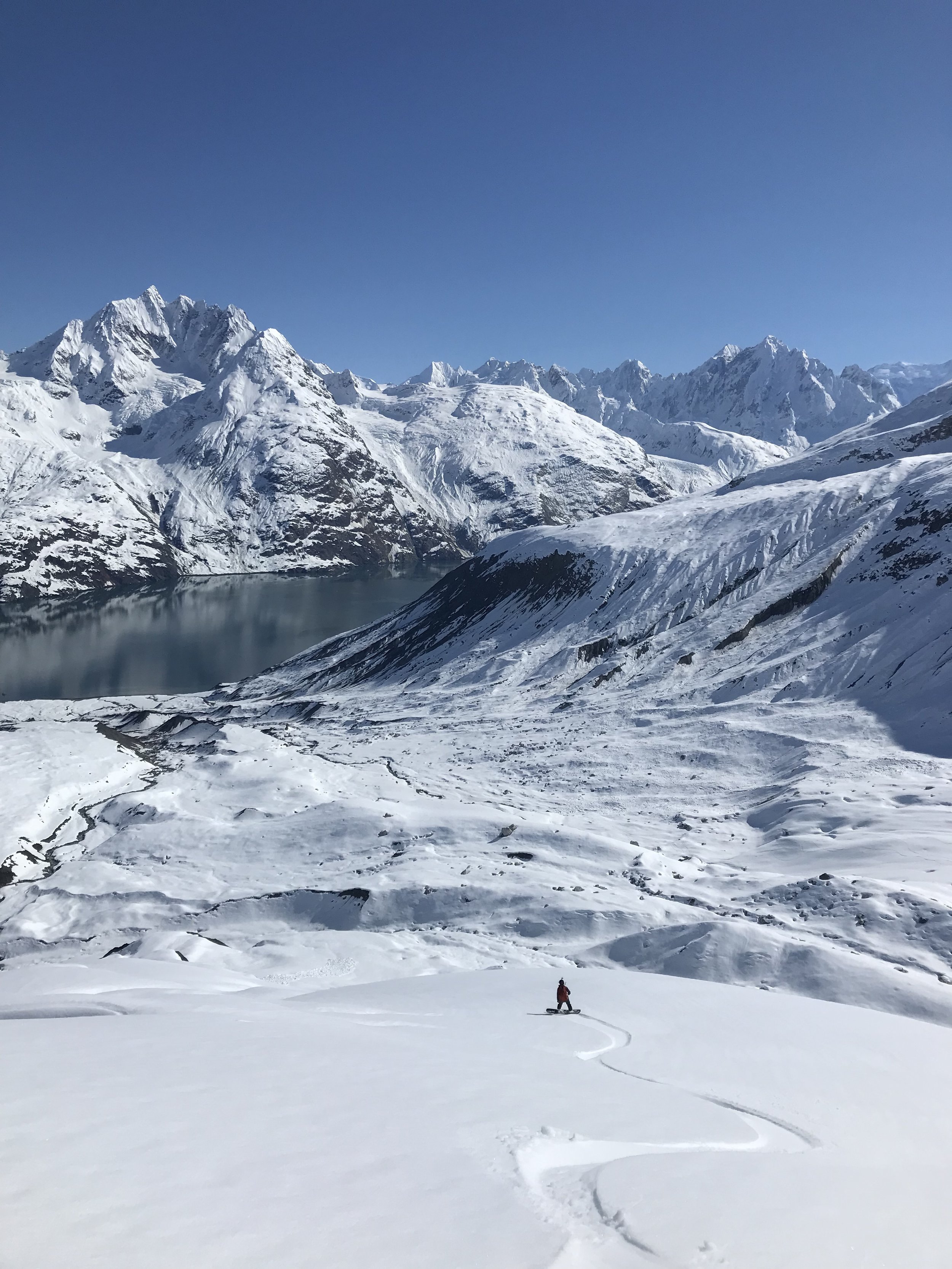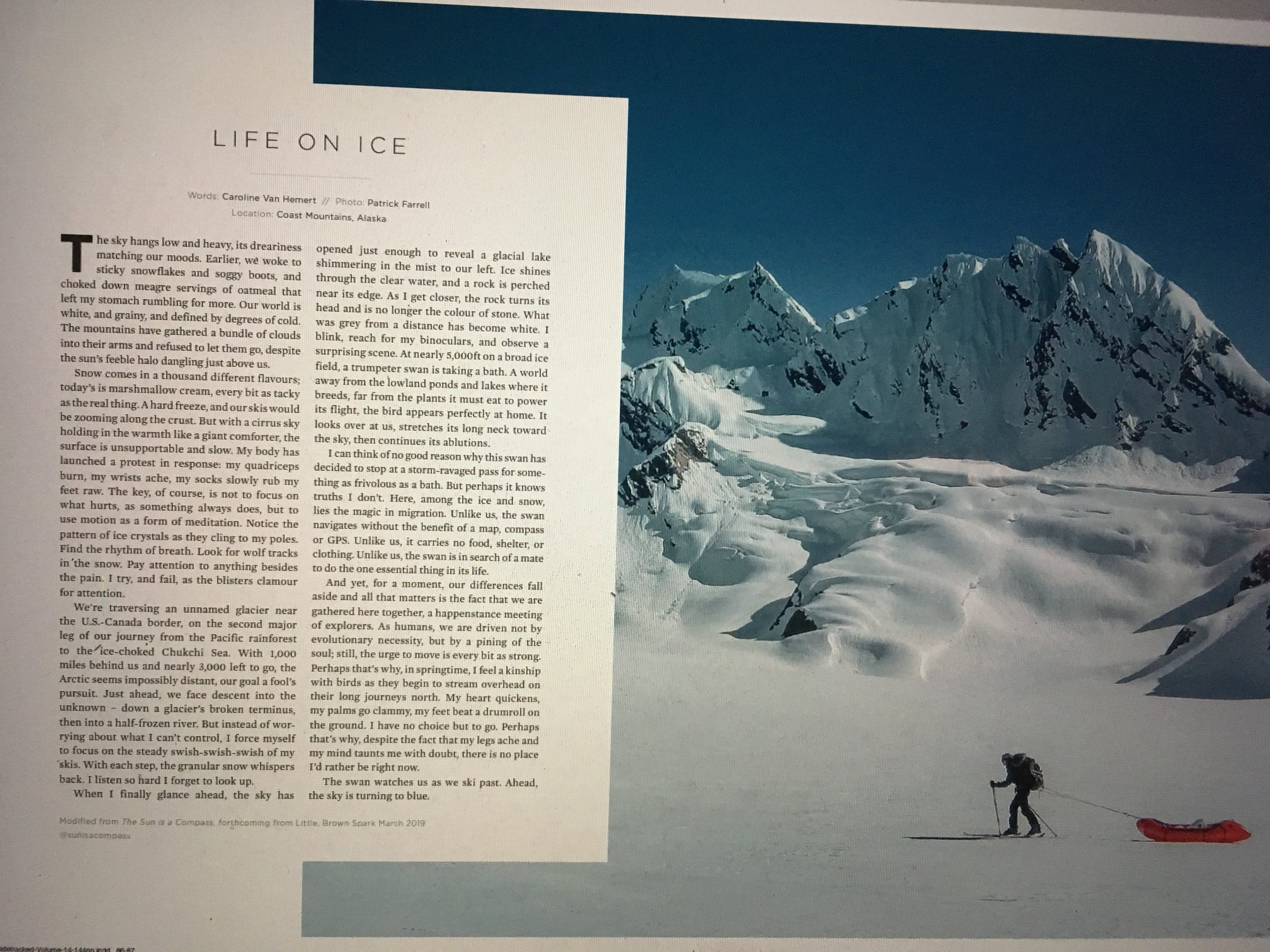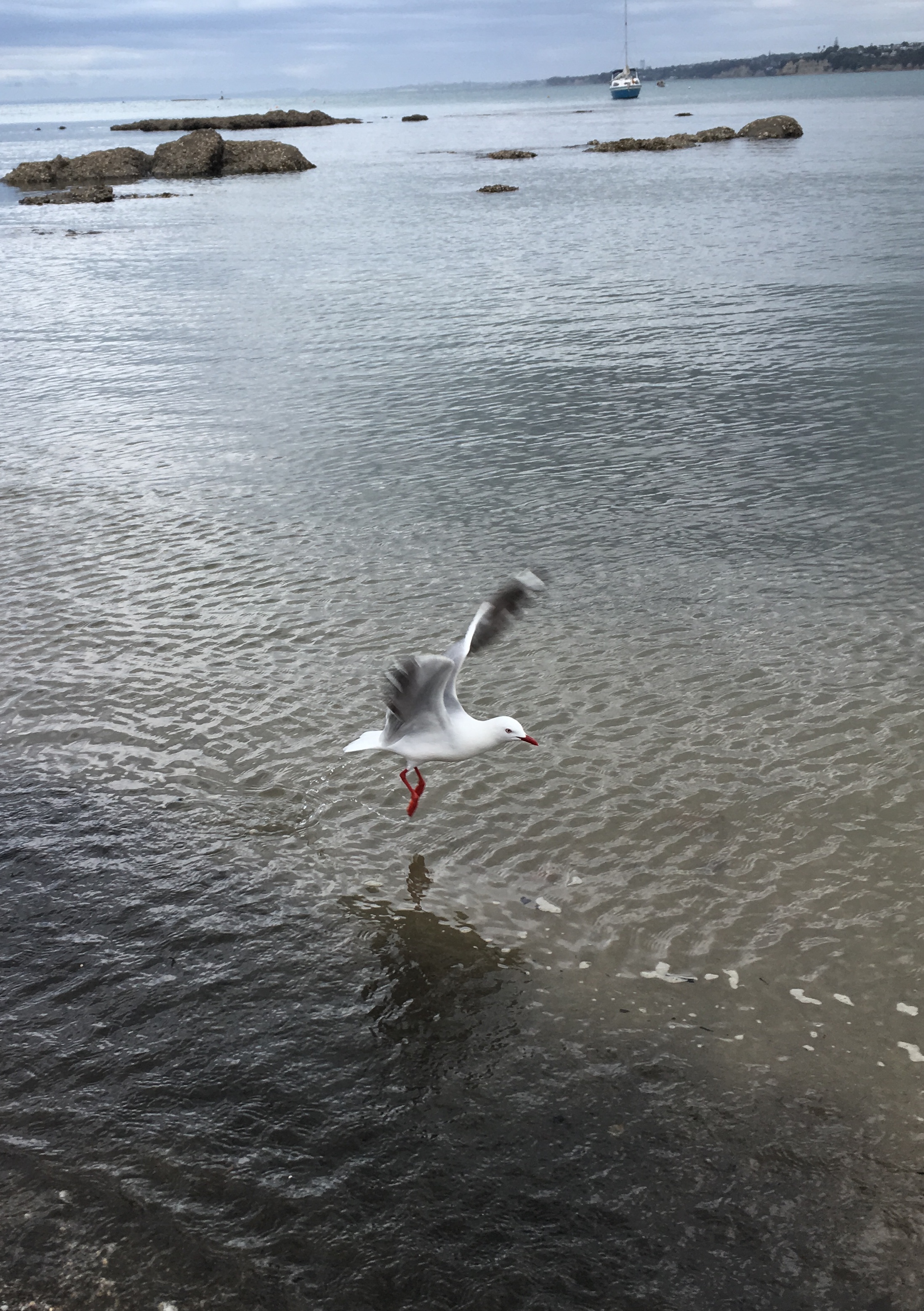Our son, Huxley, was five weeks old when a local pilot landed on the beach in front of our cabin in his Super Cub. We’d last seen him when he delivered a food resupply to us in Glacier Bay the previous spring. At the time, we were on a ski and packraft traverse from Yakutat to Haines, at the peak of our backcountry wanderlust, and seemingly far from being the parents of an infant. A year later, as I walked down the beach to greet the pilot, I wondered what he might say when he saw that we had a baby. He isn’t known for niceties, or small talk even. He’s more apt to curse at you than to ask how you are, though he’s kind behind his often brash manner.
“Hey.”
“Hey.”
“What’s going on?”
“Not too much, just got out here.”
And then he notices. “What the hell is that? A baby?”
He’s a father himself, though certainly not without his tortured moments of parenthood, about which we’ve heard plenty while in the air with him or prepping gear in his hangar. Waiting for a snide comment, or a “now you’ve done it” look, I brace myself. Instead, I see something soften in his face when he says, “Oh, you’ve got to do it. It’ll make you a better person.”
He’s right. It will make you a better person. It makes me a better person every day, even during those moments of wanting to pull my hair out, or yell, or recruit a babysitter so Pat and I can have a few minutes of quiet. Or those less-proud moments when I do lose my temper and shout because our kids are fighting, for the twelfth time, over who gets to close the door. Because it’s been raining for a week straight. Because two boys in a small cabin are impossible. And yet I can’t imagine it any other way.
On the mornings when current political realities feel suffocating (as they often do lately), I can’t help but smile as footed pajamas come padding down the stairs. It’s a new day, and there’s no denying it when a 2- and a 4-year-old wake up ready for adventure. It’s raining buckets, but they don’t care. There’s the same bad news on the radio, but they’re too busy listening to the patter on the roof and the wind in the trees to notice. Their energy is spent battling over who gets more raisins, figuring out how we will join three toys with a single piece of twine, or pondering why crabs don’t live where the waves crash on the beach. For this, I am both driven mad and infinitely grateful. Their world view dwells entirely in the present. Though Pat and I can’t attest to the same, when we are with them we are forced into living in the now, and nowhere else. It’s a chaotic sort of Zen.
Over the past several days, our local lighthouse has been reporting gusts of 50 knots, every bucket and barrel is full to overflowing, and our beach froths white with surf. It’s fall in Lynn Canal, which means rain, wind, and big seas. Five years ago, I would have snuggled up by the woodstove, pulled a favorite novel from the bookshelf, and settled in to watch the storm splatter rain against the windowpanes. Today, I am reading children’s books and cleaning playdough from the cracks in the floor. After a summer that never seemed to end, we have no grounds for complaint about the recent stormy weather. But cabin fever takes on certain intensity with two active young boys sharing our space. Sipping coffee and daydreaming on the couch is not in our current life plan. Fortunately, after four months spent largely outside, the boys don’t think much about suiting up in raingear and playing with trucks and sticks in the deluge. Ironically, in a rainstorm, the most popular activity seems to involve buckets of water.
Since Pat put up the electric bear fence, we’ve had only two breaches—a brazen black bear that either didn’t get shocked the first time, or didn’t get the message that nuzzling a charged wire is uncomfortable. On the first occasion, the bear didn’t seem to notice anything out of the ordinary as it ambled past our porch. The second time, it came barreling through, hightailing out the opposite side, perhaps a sign that something about the fence finally registered as a deterrent. We haven’t seen it since.
We had a glorious September, with more sunshine than I thought possible for a southeast Alaskan fall. Between catching up on work, writing, and cabin projects, we’ve enjoyed lots of mini-adventures at Glacier Point and nearby. As usual, we’ve had more wildlife than human visitors, although a fun week with cousins from Seattle almost bucked that trend. Large rafts of scoters have come and gone, a coyote trotted just a few feet from me, sea lions have toyed with our crab pot, and half a dozen bears have wandered by. We’ve taken trips to the nearby islands to beachcomb, tested our rowboats with all four of us on board, and hiked to the Davidson Glacier.
Beyond the many idyllic cabin scenes, however, is the looming prospect that the University of Alaska will finalize the timber sale they’ve been threatening. So far, they’ve been unwilling to disclose any details, other than the fact that all of their holdings in the area are up for negotiation, including parcels neighboring ours. We’re surrounded by nothing but water and trees for miles, and yet sometimes it feels like the chainsaws and loaders could come at any moment. So far it’s only been a crew of five timber surveyors, snarling at me when I walked over to say hello. We’re trying not to let these facts gnaw at us, and, as with all the rest, kids are a good antidote to worrying too much about what might come.
A fall backpacking trip in the Haines Pass also reminded us that wilderness travel with a toddler and a preschooler is possible, and even fun. Huxley impressed us all by hiking more than 5 miles a day, with glacially-fed creek crossings among his highlights. At that pace, we could actually make it somewhere. Even if the distances aren’t large, and barely a quarter of what Pat and I became accustomed to traveling on our own, several miles off-trail is far enough to find a bit of wildness. In this case, it came in the form of a stunning glacial valley, a black wolf loping across the tundra, and blueberry bushes still thick with berries. After a few days in the mountains, we were inspired to try more of the same. Though it’s literally on the other side of the planet, we’d been toying with the idea of traveling to New Zealand, in large part because of the many easy opportunities for backcountry travel, especially with kids. Finding mileage tickets pushed us over the edge and we are now officially going! We have been reluctant to leave Glacier Point after looking forward to spending much of the year here, but a week of intense rain and wind is helping to convince us that taking a little break won’t be so bad. We have no real itinerary, other than spending most of our time hiking and camping.
So, in a month, as I’m wondering what I’m doing on an extended road trip with a toddler and a preschooler, listening to more depressing political news from home or worrying about logging in my backyard, I will remind myself that I am in training to be a better person. A more compassionate person. A person who can take in all of what the world has to offer, in its ugliest and most beautiful forms, and still ask hopefully, “a few more raisins?”













































































































































